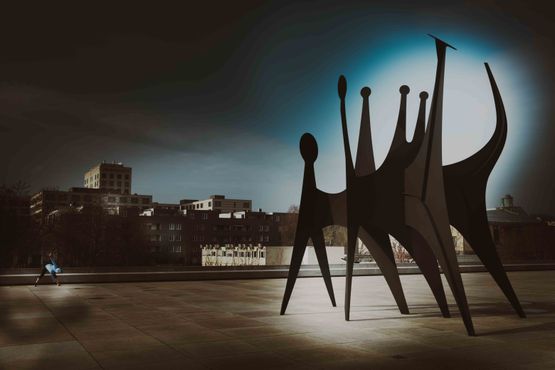Eyes (closed) on war

© 2025 FdR / RESY CANONICA
Only those who do not want to see war for what it really is can believe in good guys and bad guys, in good and evil. There is no shortage of examples. In response to an article in the Neue Zürcher Zeitung about two photographs awarded by the World Press Photo.
Those who read Faccia da Reporter and follow my work are familiar with my belief that on the few occasions when war seems closer than it really is, we do everything we can to avoid seeing it. And, in order to succeed, we come up with pretexts as big and bulky as an elephant.
This is the case of an article that appeared today in the NZZ, written by Ulrich M. Schmid. The pretext was provided by three photographs recently awarded by the World Press Photo (WPP). Below I will limit myself to the part in which Schmid deals with two shots in particular.
First: the shot by Florian Bachmeier, showing Anhelina, a Ukrainian child traumatised by war, photographed lying on a bed with her gaze directed towards a window.
Second: Nanna Heitmann's shot, showing a pro-Russian soldier from the People's Republic of Donetsk lying on a stretcher in a makeshift field hospital before having an arm and a leg amputated. The image seems to recall Hans Holbein's Christ in the Tomb and Leonardo Da Vinci's Last Supper.
WPP had planned to exhibit the two images together, as a diptych. However, following protests from the Association of Photojournalists and the Ukrainian Ministry of Foreign Affairs, it has backtracked and is now presenting the two photographs separately. WPP's statement explaining why they were originally combined has also been modified.
The NZZ article unhesitatingly sides with those who criticised the decision of the WPP jury and provides a textbook example of what I have been arguing for some time: seeing (and showing) war for what it is, on all its fronts, creates an unbearable scandal for those who view war itself through selective moral categories, dividing the world into good and bad. Ulrich himself refuses to look at the war, preferring the version he has made of it.
That is, he prefers to believe that the war corresponds to the consolatory and, after all, reassuring image of the fight of good against evil, of good against bad.
Needless to say, I don't agree.
Let's see how Ulrich M. Schmid interprets the shot of the seriously wounded pro-Russian soldier taken by Nanna Heitmann: ‘This double quotation (Holbein and da Vinci, see below) metaphysically exalts the figure of the soldier: he appears as a new Messiah suffering for a higher ideal. In this way, the photo ultimately supports a Kremlin propaganda narrative that celebrates its soldiers as redeemers and assigns them a well-defined place in the national history of salvation.’
I really don't know where Ulrich M. Schmid got this interpretation, other than from the fact that the photographer, who is German, currently lives and works in Russia. Perhaps Schmid will explain it to us.
Once gain, Ulrich M. Schmid's interpretation is one that is content with little. He doesn't have enough courage to cross the fence between the warring parties and the distribution of wrongs and rights. Only this courage would allow him to look war in the eye without looking down for a second.
Schmid continues, and this is well worth reading: ‘The aesthetic quality of the photograph in this case is in stark contrast to the moral evaluation of the subject represented’.
In other words: the photograph is too beautiful to allow us to pass moral judgement on it.
What would this moral judgement be? Let's read: ‘The truth of the image is as simple as it is bitter: the soldier was wounded because he is fighting in a brutal war of aggression. This war was started in faraway Moscow’.
Schmid's moral judgement even becomes a truth, therefore an absolute axiom. However, it is the truth that seems to comfort him so much: that of a war in which the good guys are on one side and the bad guys on the other.
Again: there is no need for me to say that, based on my experience, this vision of battlefields – of all battlefields – seems to me to be unsustainable and unbearable.
Let's read Ulrich M. Schmid's conclusion: ‘At best, the soldier's suffering is a senseless consequence of Putin's ruthless decision to go to war. At worst, he is jointly responsible for the trauma of the girl, whose childhood has just been destroyed by the bombing’ (the allusion is to Florian Bachmeier's shot gg.).
I think I've provided an excellent demonstration of how it's possible to close our eyes to war and only see the version that allows us to sleep at night. If we had the courage to keep them open, instead, we wouldn't sleep at all, but at least we would understand.
We would understand what war really is, what it does to human beings, adults and children, soldiers and civilians, beyond ideological and easy moralising walls. Walls that we put up to avoid seeing.
If there is a lesson to be learnt from the photographs of Florian Bachmeier and Nanna Heitmann, it is this: the judgement that war forces us to make goes far beyond a superficial ‘moral evaluation’. In recognising the disasters that war (fought by human beings) causes without making any distinction between good and bad, the only thing we are called upon to do is recognise the subtle deceptions – and there are many – that contribute to fuelling it. To believe and make us believe that a war photograph can express a ‘moral evaluation’ other than this one is to take us for fools.
(gianluca grossi)




